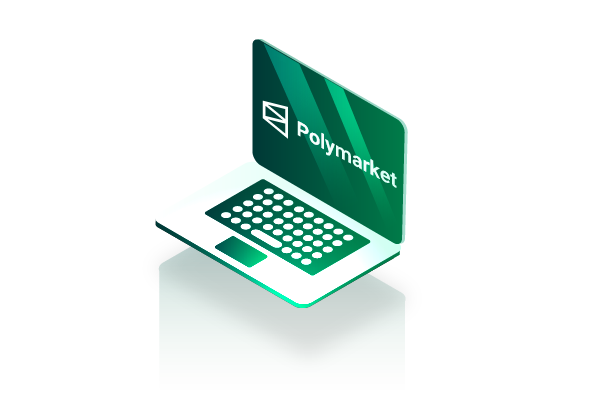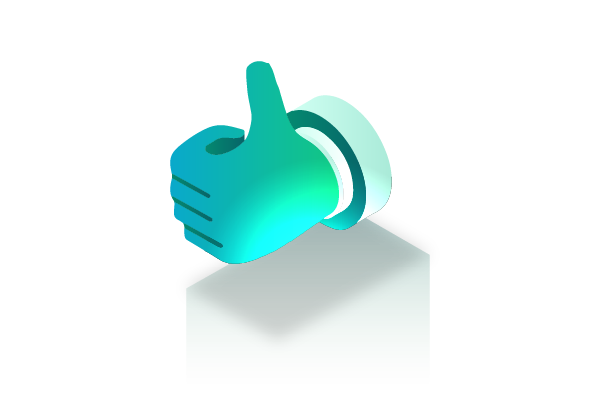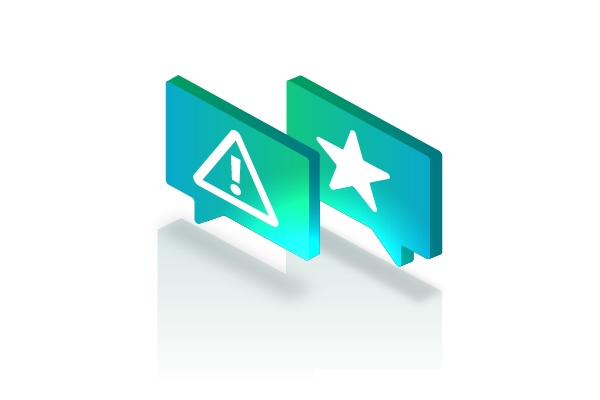Prediction markets are platforms where people can make bets or predictions about future events. Polymarket is one such platform that uses blockchain technology to allow users to trade based on what they believe will happen in the world.
This article explains what Polymarket is, how it functions, why it matters, and what risks are involved. The information is presented in simple language to make it easy to understand for a wide audience.
The article begins by describing how Polymarket differs from traditional prediction platforms. It then explains how blockchain is used, how users can participate, and the types of events covered. Finally, it outlines the benefits, challenges, and the potential future of blockchain-based forecasting platforms like Polymarket.
What is Polymarket?

Polymarket is an online platform where people can trade “shares” about the outcome of real‑world events. These events can be political, financial, social, or beyond. The key difference is that Polymarket uses blockchain, the same technology behind cryptocurrencies, to record trades in a safe, open, and transparent way.
On Polymarket, each share represents a yes or no answer to a question. For example, “Will candidate A win the election?” If a user buys shares for “yes” and the event happens, those shares rise in value and can be sold for profit. If the event does not happen, those shares lose value.
Blockchain helps Polymarket by keeping a public record of every trade. This record is hard to change and easy to check. It makes the market fair and accurate. Anyone can look at the data and see how shares move, prices change, and how many people take part.
How Polymarket Works
Polymarket is built to let people make informed predictions about real-world events using blockchain technology. The process is simple, but it follows a clear structure. Every action—from creating a market to paying out winners—relies on smart contracts and open data. This section explains the key steps involved in using Polymarket.
1. Creating a Market
The first step in the process is market creation. A market begins when a user or group of users posts a clear question about a future event. This question must be specific, easy to understand, and have a final outcome that can be confirmed later. Examples include questions like “Will a certain law pass by December 2025?” or “Will a country win a gold medal in the Olympics?”
Next, the possible outcomes are listed. Most markets have a simple “yes” or “no” answer. Some may offer multiple choices. A deadline is also added, which marks the latest time when trades can happen and when the outcome will be decided. Once everything is in place, the market is published and becomes open to users for trading.
This structure helps make sure the market is fair and clear. Everyone sees the same question, the same choices, and the same rules.
2. Buying and Selling Shares
After a market is created, users can begin to trade shares based on what they think will happen. Each share reflects one possible outcome. If a person believes the event will happen, they can buy shares for “yes.” If they believe it will not happen, they can buy “no” shares.
The price of a share shows how likely the public thinks the event is. For example, if a “yes” share costs $0.60, that means there is a 60% chance the event will happen, according to the market. Prices change as people buy or sell, just like in a stock market.
Trades can happen anytime before the market closes. If users change their minds or react to new information, they can sell their shares before the event is settled. This makes Polymarket active and responsive to news and opinions.
3. Using Blockchain
One of the most important parts of Polymarket is how it uses blockchain to record everything. The platform runs on a blockchain network, which is a public digital ledger. Every trade—who made it, how much they spent, and what they bought—is stored on this ledger.
Blockchain technology keeps these records safe and trustworthy. No single person or group can change the data. Everyone can see the same information, which builds trust among users. It also removes the need for a central authority to manage trades or verify results.
Smart contracts (self-running code) help carry out trades, handle share ownership, and process payouts. This makes the system automatic and removes human error or unfair control.
4. Resolving the Market
Once the deadline passes and the real-world event has happened, the market must be resolved. That means the final result must be confirmed. Polymarket uses trusted data sources, called “oracles,” to do this. These oracles look at public information (such as news or official reports) to decide the outcome.
If the oracle confirms that the event happened, then “yes” shares become worth $1 each. If the event did not happen, then “no” shares would become worth $1 each instead. The other side receives nothing. This clear payout system helps people understand the risk and reward of each trade.
After the result is final, the market closes, and the blockchain records the outcome. Users who picked the correct outcome can then withdraw their winnings or use them in other trades.
Polymarket works through a transparent system that starts with a clear question and ends with a trusted resolution. It allows users to make trades based on beliefs, and it ensures fairness using blockchain. Every step—from market creation to payouts—is open and recorded, which helps build trust in the platform. This process is what makes Polymarket stand out among prediction markets.
Also Read: 7 Best Prediction Market Platforms to Know in 2025
Advantages of Polymarket and Similar Platforms

Blockchain-based forecasting platforms like Polymarket offer several strong benefits over traditional systems. These benefits come from how the platform is built, how people trade, and how data is stored and shared. The table below shows the key advantages that make Polymarket useful, efficient, and trustworthy.
| Advantage | Description |
| Transparency | All trades are on blockchain, visible to all. |
| Speed | Markets open and trade in real time. |
| Low cost | No middlemen; lower fees than some traditional prediction markets. |
| Wide range of topics | Covers politics, finance, health, tech, and more. |
| Incentive to be honest | Financial reward drives accurate predictions. |
Explanation of the table:
- Transparency: Since every trade is recorded on the blockchain, users can check the data anytime. Nothing is hidden, and no single group controls the information. This helps users trust that the system is fair and open.
- Speed: Trades happen instantly, without waiting for approval or slow processing. Market prices can change fast as new information comes in. This makes the platform more responsive and useful during fast-moving events.
- Low cost: Because there are no brokers or middlemen, fees are lower than in many other systems. This means users keep more of their money when trading. It also allows people to take part with smaller amounts.
- Wide range of topics: Markets can be made for almost any public event—from elections to sports to tech launches. Users are free to choose or create markets based on what matters to them. This variety makes the platform interesting and flexible.
- Incentive to be honest: Users who make correct predictions can earn money, which rewards careful thinking. Since only accurate outcomes win, there is a reason to do research and avoid spreading false ideas. The market system pushes people toward truth, not just opinion.
Polymarket’s design helps make prediction trading faster, cheaper, and more trustworthy. These advantages give users more control, more freedom, and better access to information. For those interested in event forecasting, platforms like Polymarket offer a modern and reliable way to take part.
Risks and Concerns
Although Polymarket and similar platforms offer new ways to predict real-world outcomes, they also involve real risks. Users should understand these risks before they start trading, especially since this is not just a game—it involves money, responsibility, and some technical skill. Below are some of the most common concerns linked to using Polymarket.
1. Loss of Money
Trading on Polymarket is similar to betting, which means there is always a chance of losing money. If a user predicts an event incorrectly, the money spent on those shares is lost. This risk is higher for users who trade without doing enough research or those who follow public opinion blindly. Even experienced traders can lose if the outcome is unexpected.
2. Market Manipulation
People with a lot of money or influence might try to push the market in a certain direction. They can buy large amounts of one type of share to make others believe something is more likely than it really is. This can lead to false price signals and cause less informed users to make bad trades. While blockchain is transparent, it does not stop manipulation by powerful actors.
3. Reliance on Oracles
Polymarket depends on oracles—trusted sources that confirm the outcome of each event. If an oracle makes a mistake or uses incorrect data, the market might resolve the wrong way. This can lead to unfair payouts and loss of trust among users. Even though oracles are chosen carefully, they are still a point of risk.
4. Regulation and Legal Issues
Prediction markets can be viewed as gambling or financial tools in many countries. Depending on local laws, using or operating such platforms may be restricted or even illegal. This creates uncertainty for both the platform and the user. Legal rules can also change, which makes long-term planning difficult.
5. Technical Barriers
To use Polymarket, users often need a crypto wallet, some understanding of blockchain, and access to digital currency. These requirements can block people who are not tech-savvy or who live in areas with poor internet access. Mistakes, such as sending funds to the wrong address or losing access to a wallet, can also lead to permanent loss of funds. The learning curve can be a challenge for new users.
Despite its strengths, Polymarket is not risk-free. Anyone considering using the platform should weigh the risks against the benefits, start small, and learn the basics before diving in. Understanding these concerns helps users make better, safer decisions when taking part in prediction markets.
Also Read: 15 Best Web3 Prediction Markets to Know in 2025
Real‑World Examples and Use Cases

Polymarket is not just a concept—it is already being used to track and predict real-world events across many fields. From politics to public health, these prediction markets give insight into what people expect to happen. They combine financial motivation with collective knowledge to form a unique kind of forecasting. Below are some of the main areas where Polymarket is applied.
1. Political Forecasting
Polymarket is often used to predict the outcome of elections, referendums, or the passing of new laws. Traders pay close attention to news, debates, and poll numbers to adjust their positions. For example, if a candidate starts rising in the polls, the price of “yes” shares for their win may increase. This creates a market that reflects the current political mood.
2. Financial Events
Economic reports and business news are another popular category. Users trade based on central bank decisions, inflation rates, or company earnings announcements. For instance, a trader might buy shares predicting that the Federal Reserve will raise interest rates. If the event happens as expected, those shares become valuable, and the trader earns money.
3. Public Health
During health crises, such as a pandemic, Polymarket can host questions about infection numbers, vaccine approvals, or government responses. Traders use scientific news and official data to guide their choices. These markets can help reveal public expectations about how fast a vaccine might be approved or when a wave might end. The data also serves as a tool for public health communication.
4. Technology & Innovation
Polymarket users can bet on when new tech products will launch or when major breakthroughs will occur. For example, people might trade shares on the question, “Will Company X release its new AI chip by December 2025?” The price reflects how likely that event seems based on industry news and trends. These markets attract tech watchers and industry insiders who follow innovation closely.
| Use Case Category | Example Question | Possible Outcome |
| Politics | Will Candidate X win the election? | Yes or No, settle after event |
| Finance | Will unemployment fall below 5% this month? | Yes or No, settle on data release |
| Health | Will a vaccine get approval by a certain date? | Yes or No, settle at decision |
| Technology | Will a new model be released by a given date? | Yes or No, settle when released |
Explanation of the table:
This table gives a few sample markets that could be found on Polymarket, based on real-world events. Each row shows a topic area, a type of question that might be asked, and how it would be resolved. In each case, the result must be confirmed with public data, and the market pays out based on whether the event happens or not.
Polymarket connects prediction markets with actual events that people care about. This makes it more than just a place to trade—it becomes a real-time reflection of what people think is most likely to happen. Whether it’s politics, finance, health, or tech, Polymarket brings together data, money, and public opinion in one platform.
Conclusion
Polymarket is a modern tool for predicting future events using a blockchain‑backed system. It allows anyone, anywhere, to trade on what they think will happen. The system is open, fast, and direct, so users can trade without middlemen. However, it is still a bet, and carries risks—losses, manipulation, and legal issues are real.
If you use Polymarket, learn how it works: setting up markets, trading, confirming results. Be aware of the power and limits of the system. Use simple tools like wallets and oracles, and check local laws before engaging.
Forecasting markets like Polymarket are changing how we understand what might happen next. They bring insight, data, and collective knowledge into one place. Whether you trade, watch, or learn, this platform offers a fresh, open way to explore the future.
Disclaimer: The information provided by HeLa Labs in this article is intended for general informational purposes and does not reflect the company’s opinion. It is not intended as investment advice or recommendations. Readers are strongly advised to conduct their own thorough research and consult with a qualified financial advisor before making any financial decisions.

Joshua Soriano
I am a writer specializing in decentralized systems, digital assets, and Web3 innovation. I develop research-driven explainers, case studies, and thought leadership that connect blockchain infrastructure, smart contract design, and tokenization models to real-world outcomes.
My work focuses on translating complex technical concepts into clear, actionable narratives for builders, businesses, and investors, highlighting transparency, security, and operational efficiency. Each piece blends primary-source research, protocol documentation, and practitioner insights to surface what matters for adoption and risk reduction, helping teams make informed decisions with precise, accessible content.
- Joshua Soriano#molongui-disabled-link
- Joshua Soriano#molongui-disabled-link
- Joshua Soriano#molongui-disabled-link
- Joshua Soriano#molongui-disabled-link

